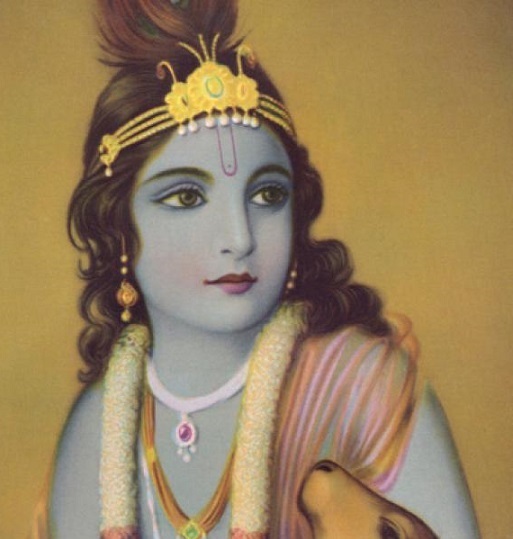"The Vedic hymn known as kāma-gāyatrī describes the face of Kṛṣṇa as the king of all moons. In metaphorical language, there are many different moons, but they are all one in Kṛṣṇa. There is the moon of His mouth, the moon of His cheeks, the moonspots of sandalwood pulp on His body, the moons of the fingertips of His hands and the moons of the tips of His toes. In this way there are twenty-four and a half moons, and Kṛṣṇa is the central figure of all of them.
The dancing movement of Kṛṣṇa’s earrings, eyes and eyebrows is very attractive to the damsels of Vraja. Activities in devotional service increase the sense of devotional service. What else is there for two eyes to see beyond the face of Kṛṣṇa? Since one cannot sufficiently see Kṛṣṇa with only two eyes, one feels incapable and thus becomes bereaved. Such bereavement is slightly reduced when one criticizes the creative power of the creator. The unsatiated seer of Kṛṣṇa’s face thus laments: 'I do not have thousands of eyes but only two, and even these two eyes are disturbed by the movements of my eyelids. So it is to be understood that the creator of this body is not very intelligent. He is not conversant with the art of ecstasy but is simply a prosaic creator. He does not know how to arrange things properly so one can see only Kṛṣṇa.' "
(Teachings of Lord Caitanya, Chapter 10)
.

